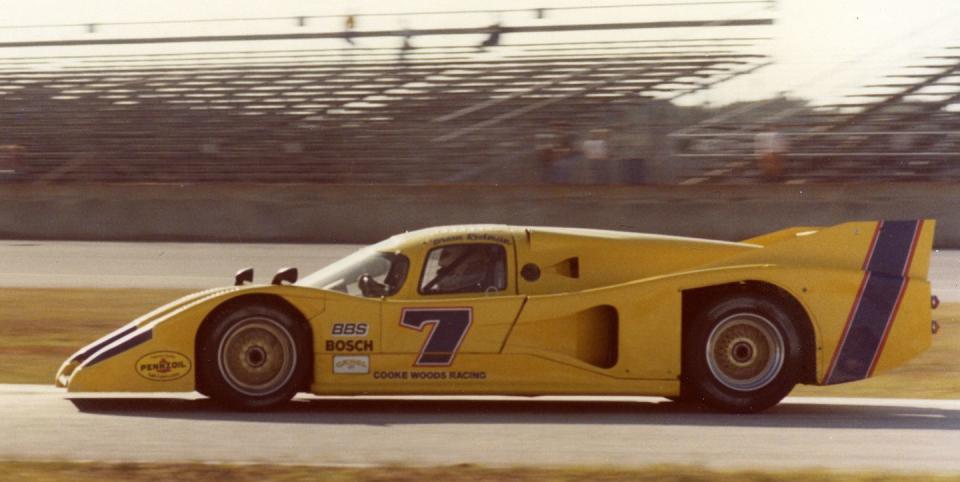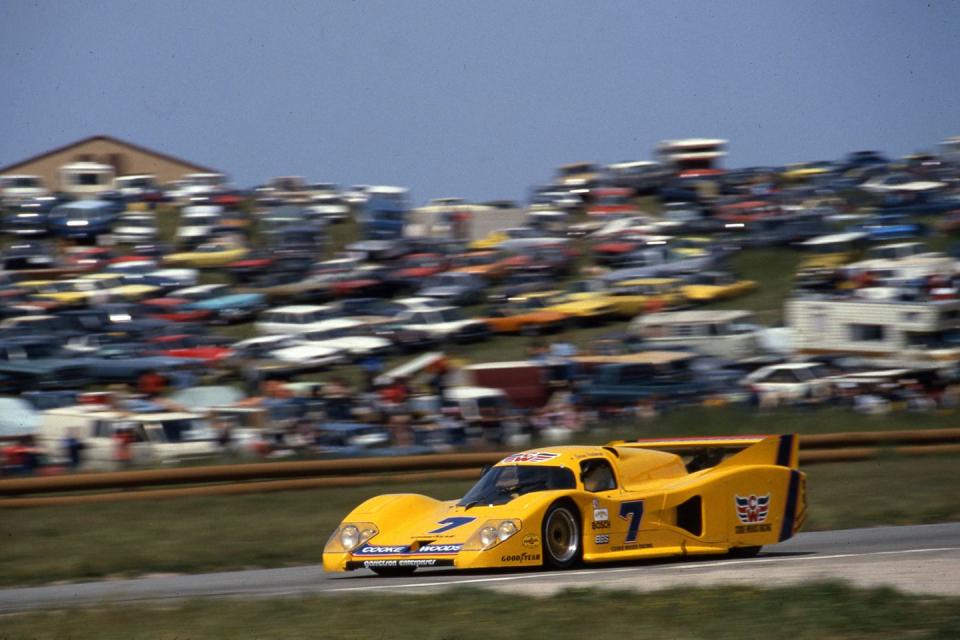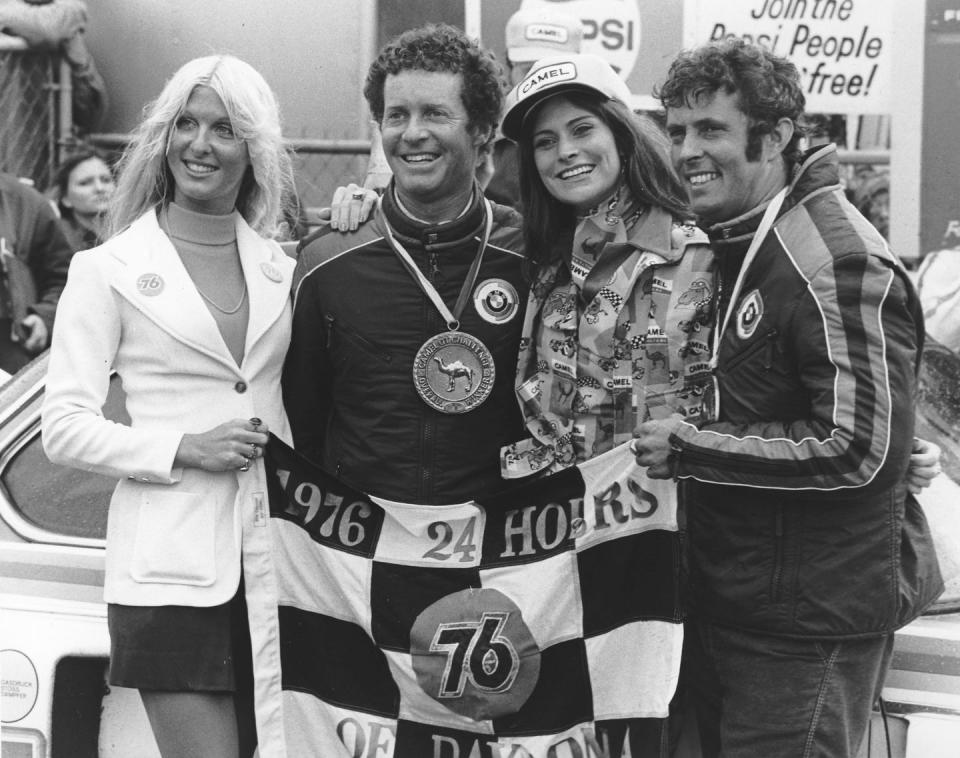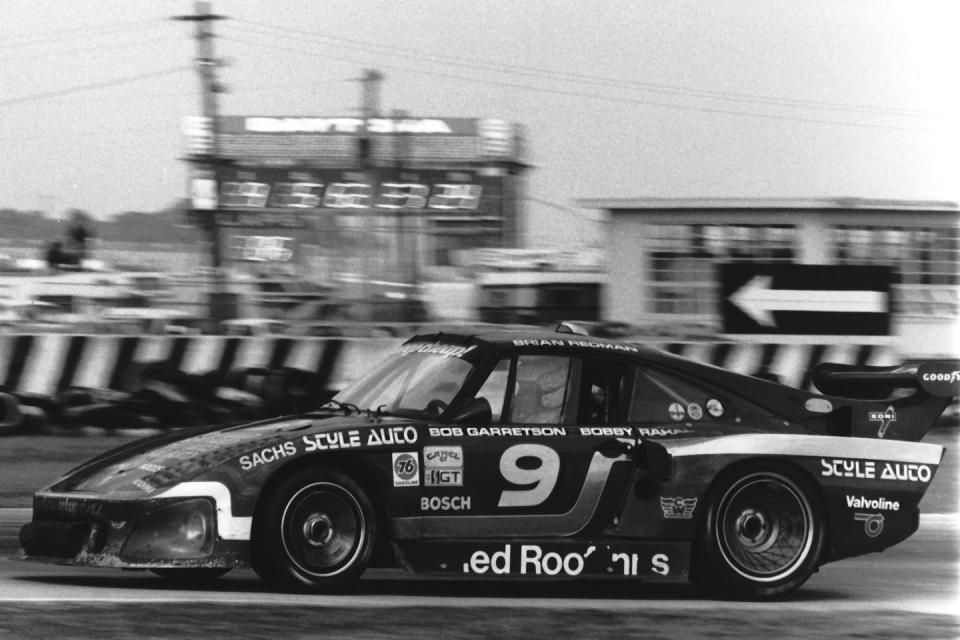How Brian Redman's Lola T600 Ushered in the GTP Era With its 1981 Laguna Seca Win

The original GTP cars are a far cry from the current new era of Le Mans Daytona hybrids from Acura, BMW, Cadillac and Porsche.
The first GTP car to win an IMSA race was a Lola T600 in the hands of driver Brian Redman at WeatherTech Raceway Laguna Seca in 1981.
The T600’s first engine was a ground-pounding Chevy V-8 built by Chaparral and in no need of assistance from an electric motor to be competitive.
The new GTP sure isn’t like the old GTP.
When IMSA elected to brand its new class of hybrid prototypes by resurrecting the designation of GTP, it invited comparisons to the original Grand Touring Prototypes of the 1980s—and intentionally so. The GTPs of the 1980s and early 1990s put IMSA on the same footing as CART and Formula 1 as well as Le Mans Group C when it came to cutting edge racing technology, visual impact, speed and fan excitement.
But what a difference between the original GTP cars and the current new era of Le Mans Daytona hybrids from Acura, BMW, Cadillac and Porsche that will make their debut in the Rolex 24 at Daytona in January.
Take the Lola T600, for example, which became the first GTP car to win an IMSA race in the hands of Brian Redman at WeatherTech Raceway Laguna Seca in 1981.

Conceived and built in a matter of months, Redman’s Lola was hardly years-in-the-making like the new hybrid prototypes. Instead of messaging to the world about a new era of sustainable cars from manufacturers, the goal was to build and sell enough chassis to keep Lola Cars Ltd. and owner Eric Broadley in business, starting with a spare set of dimensions on a single sheet of paper put out by IMSA founder John Bishop.
The T600’s first engine was a ground-pounding Chevy V-8 built by Chaparral and in no need of assistance from an electric motor to be competitive against the then dominant Porsche Turbos. When several of Redman’s IMSA competitors immediately stepped up to buy a new Lola on the weekend it first appeared at Laguna, the price was $80,000. All it took was a deposit.
Of the four manufacturers who will launch the new GTP era at the Rolex 24, only Porsche is currently offering customer cars. If you pass the background check on your racing credentials and then promise a first-born child if you turn out to be a collector, the cost of a new Porsche Penske Motorsports 963 is around $1 million, depending on the exchange rate for euros.

Redman likes the idea of recalling what was IMSA’s high-water mark in terms of car counts and fan turnout. “History constantly repeats itself,” he said. “GTP is a good name. When John Bishop introduced the class in 1980, I was recovering from my broken neck and other injuries at St. Jovite in 1977. I was working for Carl Haas, who was the Lola importer in the U.S. I said to Carl, ‘Lola can build a car to these new IMSA rules that can win this championship.’ That’s how it all started.”
After a visit to England by Redman, Broadley agreed to produce two Lolas and delivered the first one on time in March of 1981, despite a reputation for late deliveries and last-minute fiddling with car designs. But Haas declined to order the first T600s and instead instructed Redman to locate buyers for the first two chassis. “Carl said, ‘You find someone to buy those first two cars and I’ll split the profit with them on the sale of the additional cars.’”

Not exactly corporate planning on the current Tokyo, Munich, Detroit or Stuttgart scale. Redman persuaded regular SCCA Trans-Am entrant Roy Woods, an oilman from Oklahoma, and Ralph Kent Cooke, a Hollywood type whose father Jack was a highly successful businessman, to buy the first two cars.
The team of Bob Garretson Enterprises conducted testing at Riverside International Raceway for Cooke-Woods Racing in April. But with less than 300 miles of testing, it was decided to skip Riverside’s six-hour IMSA race and give the new car its baptism by fire at the following 100-mile sprint at Laguna. Under the direction of crew chief John Bright, who had helped build the cars at Lola, Redman qualified fifth behind four Porsche Turbos, which had been undefeated in IMSA for two seasons, and just ahead of a BMW M1C, another new GTP that had debuted at Riverside.
Broadley and Haas both were at the event to help christen the new Lola. Before the start of the race, Haas, chewing on one of his ever-present cigars, gave a pep talk to Redman. “Carl takes that big cigar out and says, ‘Brian, if Lola doesn’t win this race tomorrow, Lola Cars is going bankrupt.’
“So, off we go in the race,” said Redman, who quickly advanced because after qualifying the Porsche Turbo drivers had to turn down the boost to make the finish without a pit stop. “In those days there was none of those infield parts at Laguna,” said Redman. “There was a very fast lefthander and a bit of banking at Turn 1. I didn’t have to brake, but I had to lift to get the nose down a bit. About the fifth or sixth lap, the car gave an unpleasant wiggle. I knew there was either a tire going down or a loose wheel. But I kept going. I dropped down to something like sixth and suddenly, it was okay. I came back through the field, took the lead off John Paul Jr. and won.”
Bayside Disposal Racing owner Bruce Leven and John Paul Sr. of JLP Racing quickly decided to buy this new generation prototype, based on its clear advantage in handling derived from the huge tunnels on the undercarriage and the venturis plainly visible at the back of the chassis.

The day after the race, Redman discovered that the rear wheel covers, or “spats” had saved the day in addition to giving the T600 a more fantastic appearance and possibly some extra downforce.
The “unpleasant wiggle” through Turn 1 early in the race turned out to be a rear wheel starting to disengage. “We were examining the car the next day and the rear door covers were off,” said Redman. “I bent down and looked in at the rear wheel nut. I said to Eric, ‘Take a look at that.’ He bent down, looked in, stood up, took his glasses off and polished them. He said, ‘Well, Brian, that’s actually what’s supposed to happen. But I’ve never seen it happen.’
“A wheel nut had come loose,” said Redman. “It had broken the steel safety clip, but then wound itself back on again. The rapid rotation of the wheels screwed the nut back on the thread. If the rear wheels hadn’t been enclosed or I’d have slowed down, the nut would have fallen off.”
Then—as now – Le Mans was the Holy Grail of endurance racing. But the approach to the French 24-hour by Garrettson, car owners Cooke and Woods was decidedly more like the “Let’s go racing” attitude of the times and uninhibited by any careful, corporate planning. They decided to mate a Porsche turbo to the second new Lola chassis and produce an unbeatable combination. Or so they hoped. But the engine installation did not go well because the flat six Porsche had to be raised to keep the rear axles out of the airflow of the venturis at the rear and the exhausts had to be re-routed.
“We had that diabolical Le Mans thing,” recalled Redman. “I was in England in May and rang up John Bright and said, ‘Everything alright John?’ He said, ‘Well, kind of. We’re putting a Porsche turbo into the second chassis and going to Le Mans.’
“So, we arrived at Le Mans without having turned a wheel. I get in and on the first lap – bang! The drive shaft coupling broke. Then, the exhaust set fire to the underbody. We missed the rest of Wednesday practice and qualifying.
“On Thursday,” he continued, “I went to get into the car for practice and there was no underbody and no tunnels. I said to Bob Garretson, ‘Where’s the underbody?’ He said, ‘Oh, it got a bit singed. It’ll be alright.’
“I told Bob, ‘It may be alright for you standing in the pits, but it may not be alright for me going 200 mph down the Mulsanne!’”
The Lola never reached 200 mph due to a turbo problem and the missing underbody tunnels and failed to qualify. But by season’s end, Redman had won the Camel GT championship in IMSA by finishing first or second in all the races he contested in the Chevy-powered T600. Broadley eventually built and sold 12 of the prototypes to customers who used a variety of engines.
“Everybody loved the car,” said Redman, “except the Porsche fans.”

 Yahoo Autos
Yahoo Autos 